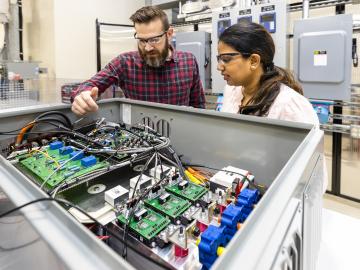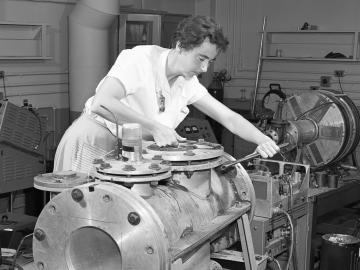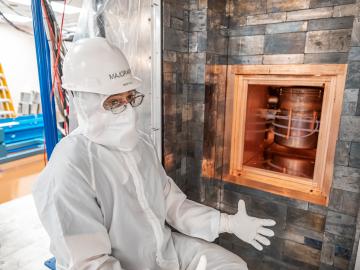
Filter News
Area of Research
- Biology and Environment (10)
- Computational Biology (1)
- Computer Science (1)
- Electricity and Smart Grid (1)
- Energy Science (30)
- Fuel Cycle Science and Technology (1)
- Fusion and Fission (4)
- Isotopes (1)
- Materials (23)
- Materials for Computing (2)
- National Security (33)
- Neutron Science (8)
- Nuclear Science and Technology (4)
- Supercomputing (35)
News Type
News Topics
- (-) Artificial Intelligence (77)
- (-) Grid (32)
- (-) Machine Learning (37)
- (-) Microelectronics (3)
- (-) Molten Salt (2)
- (-) National Security (60)
- (-) Physics (34)
- (-) Transportation (30)
- 3-D Printing/Advanced Manufacturing (56)
- Advanced Reactors (12)
- Big Data (45)
- Bioenergy (68)
- Biology (80)
- Biomedical (42)
- Biotechnology (25)
- Buildings (30)
- Chemical Sciences (35)
- Clean Water (16)
- Composites (11)
- Computer Science (111)
- Coronavirus (19)
- Critical Materials (5)
- Cybersecurity (14)
- Education (2)
- Emergency (3)
- Energy Storage (32)
- Environment (116)
- Exascale Computing (51)
- Fossil Energy (6)
- Frontier (44)
- Fusion (38)
- High-Performance Computing (81)
- Hydropower (6)
- Isotopes (33)
- ITER (4)
- Materials (51)
- Materials Science (55)
- Mathematics (8)
- Mercury (7)
- Microscopy (23)
- Nanotechnology (17)
- Neutron Science (82)
- Nuclear Energy (66)
- Partnerships (36)
- Polymers (9)
- Quantum Computing (35)
- Quantum Science (48)
- Security (16)
- Simulation (42)
- Software (1)
- Space Exploration (13)
- Statistics (2)
- Summit (40)
Media Contacts

Researchers at ORNL are helping modernize power management and enhance reliability in an increasingly complex electric grid.

Four nuclear nonproliferation staff members from the Department of Energy’s Oak Ridge National Laboratory were recognized as part of the 2021 Outstanding Security Team awarded by the Secretary of Energy for contributions to the Material Control and Accountability Technical Qualification Program Pilot.

The old photos show her casually writing data in a logbook with stacks of lead bricks nearby, or sealing a vacuum chamber with a wrench. ORNL researcher Frances Pleasonton was instrumental in some of the earliest explorations of the properties of the neutron as the X-10 Site was finding its postwar footing as a research lab.

Stephen Dahunsi’s desire to see more countries safely deploy nuclear energy is personal. Growing up in Nigeria, he routinely witnessed prolonged electricity blackouts as a result of unreliable energy supplies. It’s a problem he hopes future generations won’t have to experience.
The Autonomous Systems group at ORNL is in high demand as it incorporates remote sensing into projects needing a bird’s-eye perspective.

A team of researchers from ORNL has created a prototype system for detecting and geolocating damaged utility poles in the aftermath of natural disasters such as hurricanes.

Ben Thomas recalled the moment he, as a co-op student at ORNL, fell in love with computer programming. “It was like magic.” Almost five decades later, he strives to bring the same feeling to students through education and experience in fields that could benefit nuclear nonproliferation.

For nearly six years, the Majorana Demonstrator quietly listened to the universe. Nearly a mile underground at the Sanford Underground Research Facility, or SURF, in Lead, South Dakota, the experiment collected data that could answer one of the most perplexing questions in physics: Why is the universe filled with something instead of nothing?

The word “exotic” may not spark thoughts of uranium, but Tyler Spano’s investigations of exotic phases of uranium are bringing new knowledge to the nuclear nonproliferation industry.

Having lived on three continents spanning the world’s four hemispheres, Philipe Ambrozio Dias understands the difficulties of moving to a new place.


